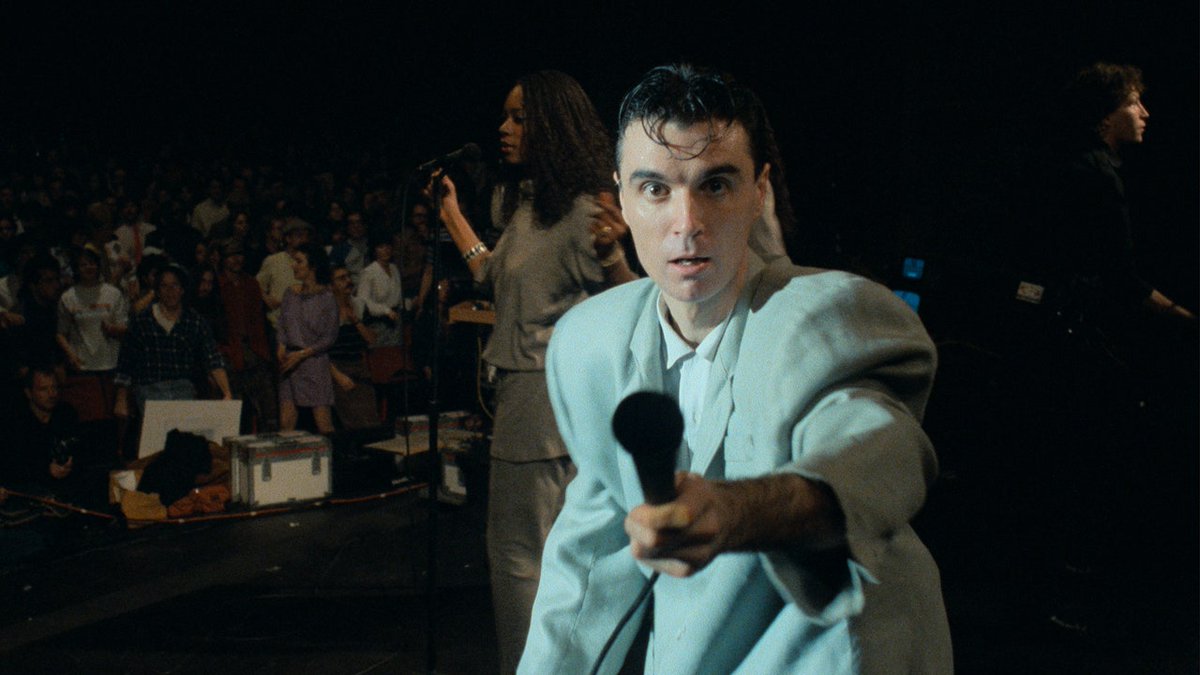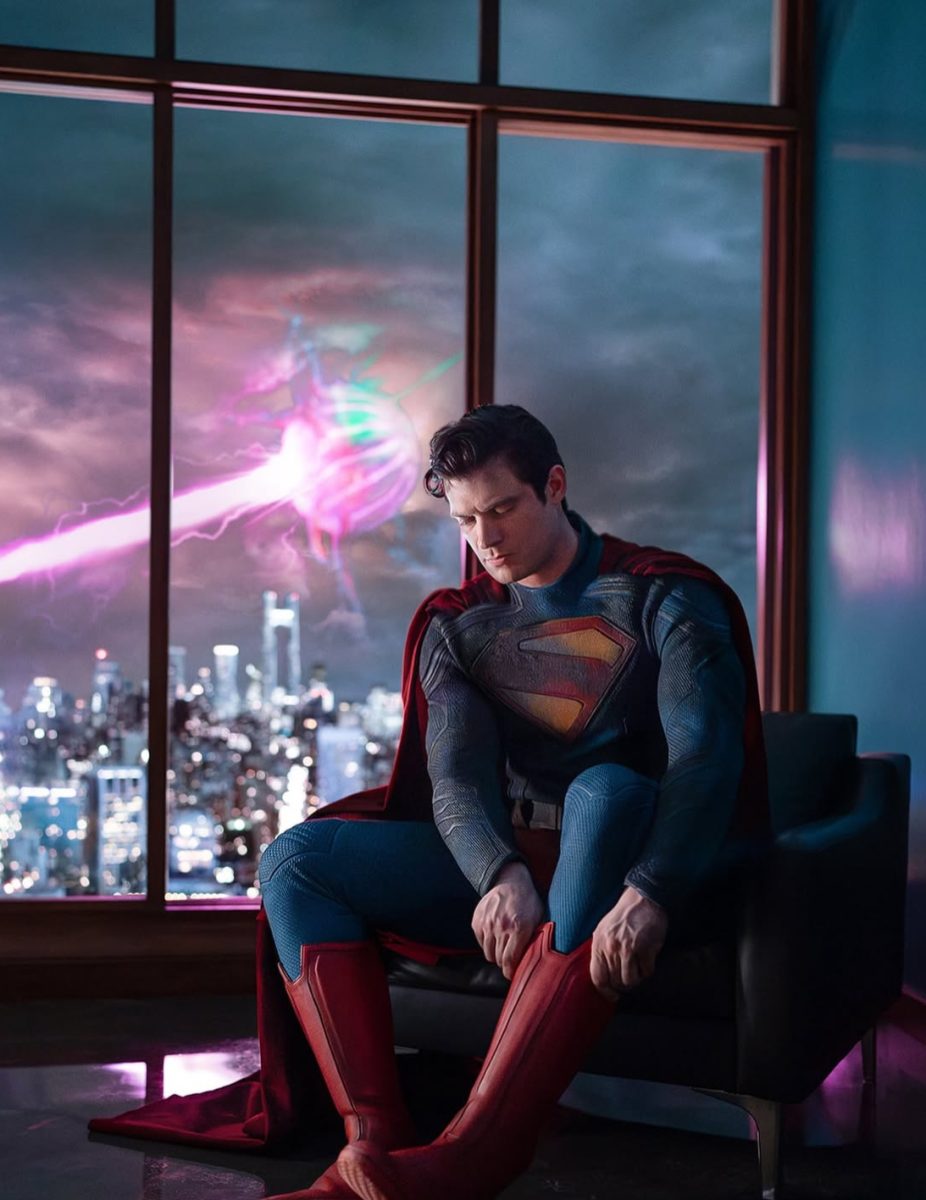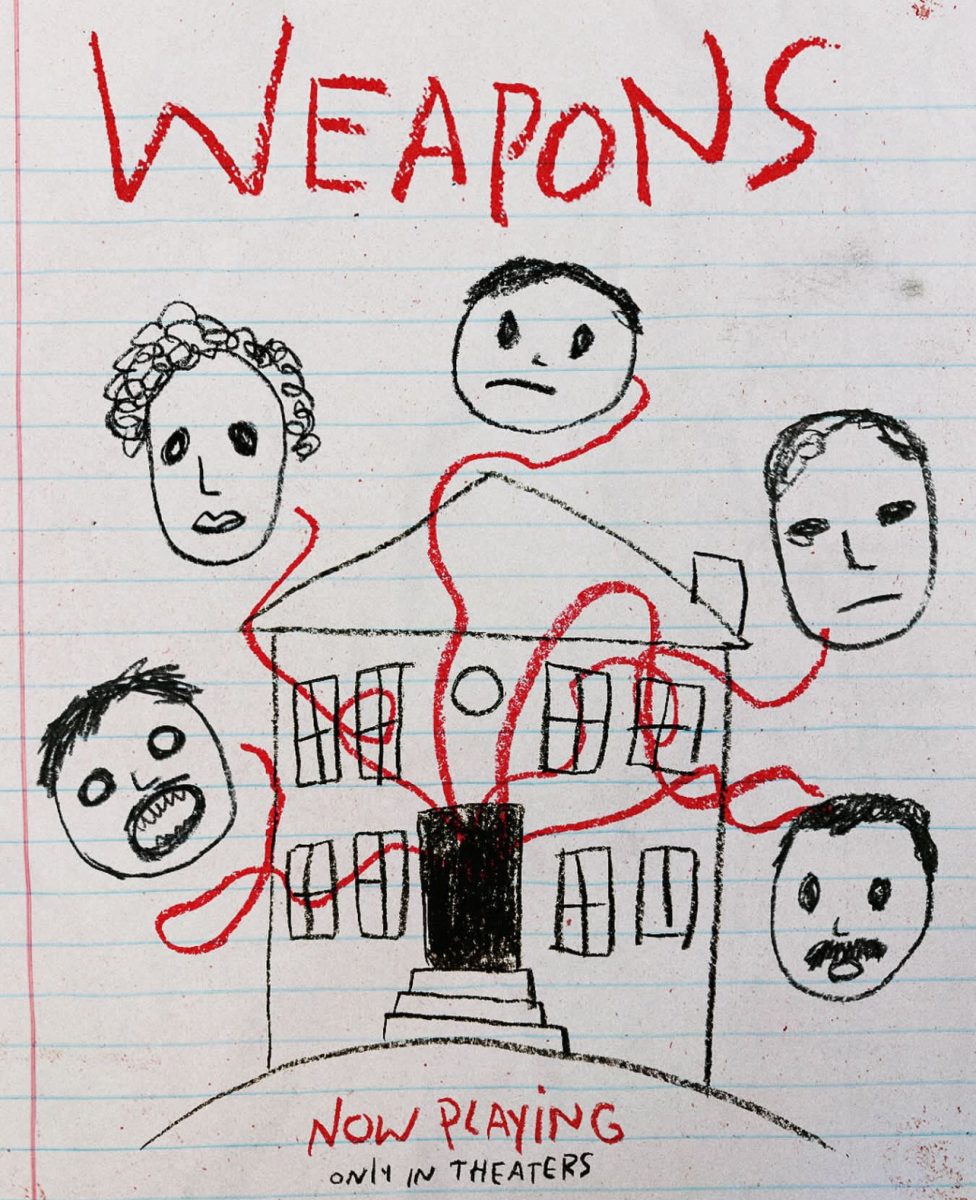“Stop Making Sense,” the recently re-released 1984 concert film featuring Talking Heads, is a film all about movement, specifically movement as a liberating force. In the opening moments, frontman David Byrne, unaccompanied by the rest of the band, greets the audience with acoustic guitar in hand. Switching on a boombox, he says he’d like to play a tape, and a tight, pulsing 808 drum begins.
Surrendering to the rhythm of the beat, Byrne launches immediately into a jittery performance of the band’s 1977 hit “Psycho Killer,” pulsing and twitching at each successive kick drum in a visual echo of Jean Paul Belmondo at the end of Godard’s “Breathless.” This opening sequence acts as the film’s thesis statement; by surrendering to the beat as Byrne does, we can, for a brief moment, transcend rationality and embrace the purest sense of joy. If the film has the same effect on you as it did on me, you’ll be bouncing up and down in your seat right along with the music.
The film is a sensory overload by design, but thankfully it eases you into the madness. After Byrne’s solo rendition of “Psycho Killer,” he’s joined by his bandmates one-by-one with each successive song. Their visual presentation is sparse and plain. Stark white lighting illuminates the simple black stage, and the band are dressed modestly and without makeup — a sharp contrast to the gaudy excess typically associated with rock music. There’s no hyper masculine posturing to be found either, and a sense of childlike wonder dominates the images. Already tuned into the band’s playfully eclectic sensibility, director Jonathan Demme captures the show with the giddy delight of a kid in a candy store. The cameras weave, bob, glide and bounce across the stage as energetically as their subjects. Demme and crew are clearly mixing business and pleasure, and it’s their infectious glee that invites the rest of us to join the fun too.
The songs featured in the band’s setlist really don’t need any introduction. What’s particularly special about the concert is the way the band takes a list of tracks that could easily be a greatest hits compilation and flips each song on its head. They’re familiar favorites imbued with the feel of a first-time listen. “This Must Be the Place” finds Byrne slow dancing with a floor lamp, an expressive take on the song’s tender warmth. Setlist closer “Crosseyed and Painless” is a carnivalesque madhouse of sound and dance, with the interlocking guitar solos of Byrne and guest musician Alex Weir only adding to the chaos. During “Girlfriend is Better,” Byrne dons his iconic “big suit,” that oversized, baggy garment that has become synonymous with the band’s image.
But it’s the small moments occuring throughout that really make this film so endearing: a sweat-drenched, wide-eyed Byrne flips his microphone towards the camera, and percussionist Steve Scales almost bumps into the camera at one point, jokingly sticking his tongue out at us. In most other concert films, these tidbits would end up on the cutting-room floor so as to not break the so-called illusion. In this one, they’re the heart and soul of the whole experience.
Indie distributor A24 oversaw the 4K restoration of the film, and Talking Heads made a rare reunion in order to promote the re-release. The band as shown in the film and the band who promoted the film couldn’t be more opposite. Talking Heads broke up in the early ’90s after Byrne left the group unannounced; drummer Chris Frantz would learn of this days later while reading the paper. The tensions between Byrne and the rest of the band, especially bassist Tina Weymouth, unfortunately persist to this day.
The Talking Heads of “Stop Making Sense” are warm and bouncy, but they’re icy and stiff in their recent public appearances. The fact that a group of talented musicians capable of coming together to make such positive music are, in reality, defined by resentment and animosity would seem to discredit the film’s message, but I prefer to take the glass half full perspective. Joy, like all emotions, is fleeting and temporary. So maybe the best thing we can do is let it grab us by the collar and take us away.







































































































































































































